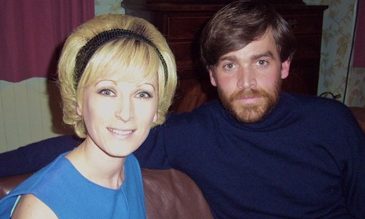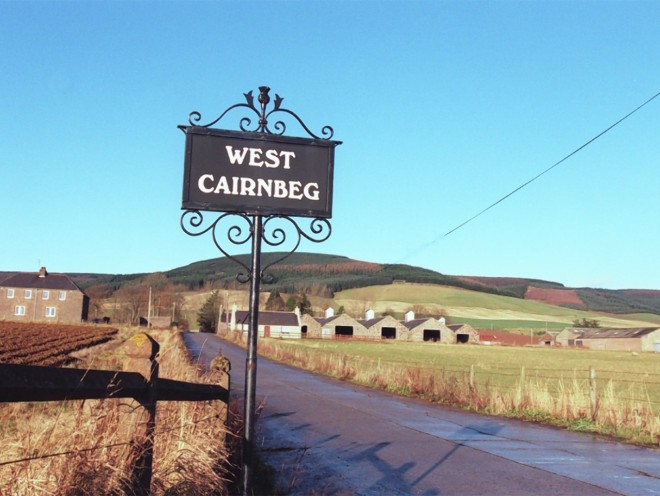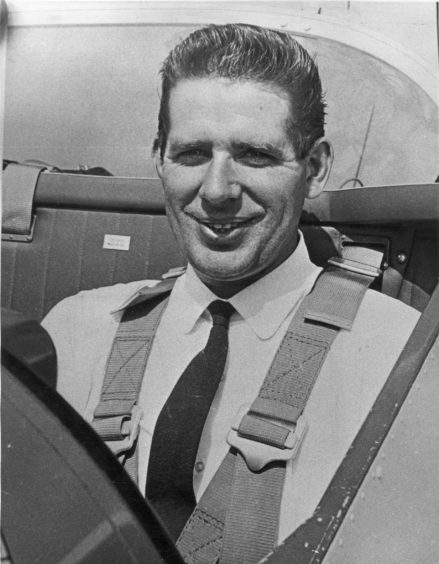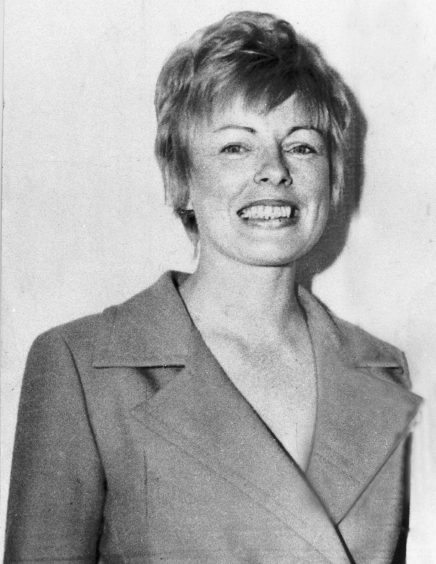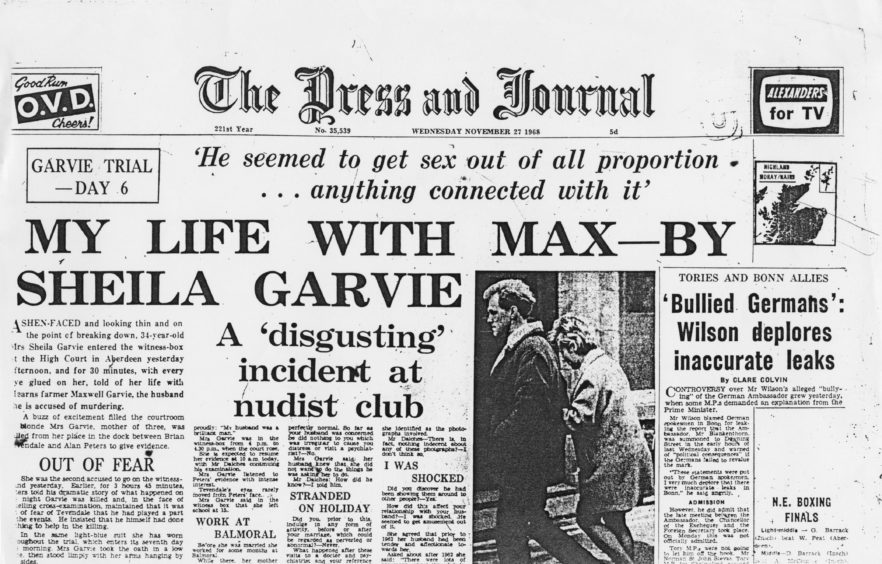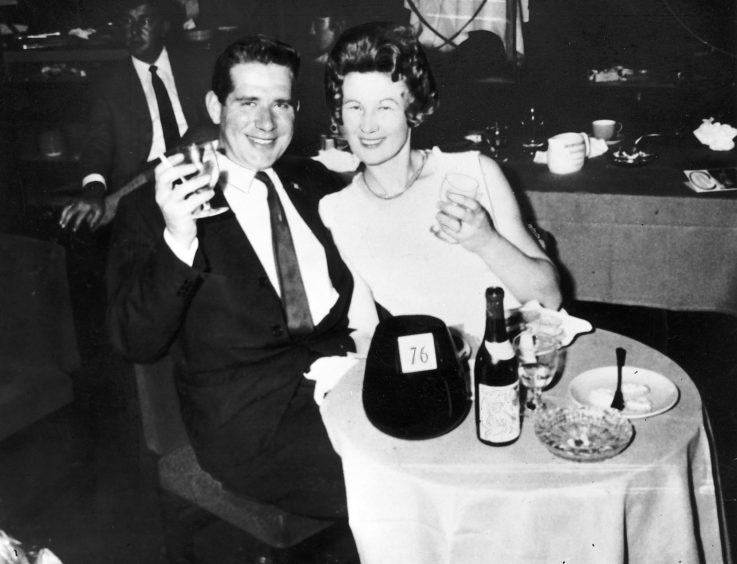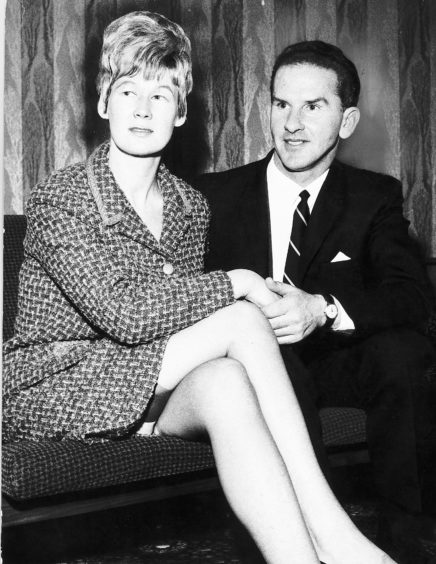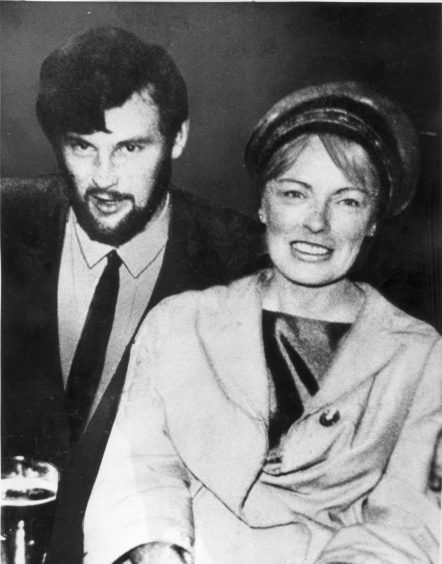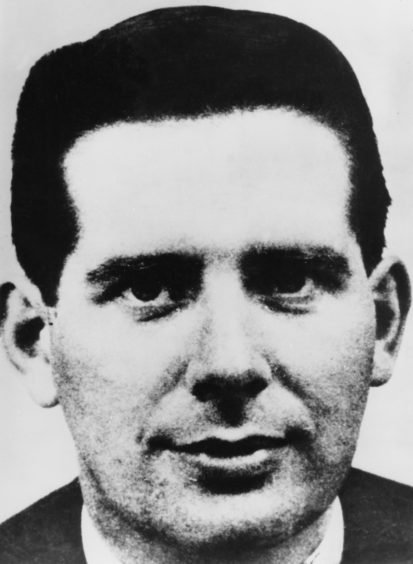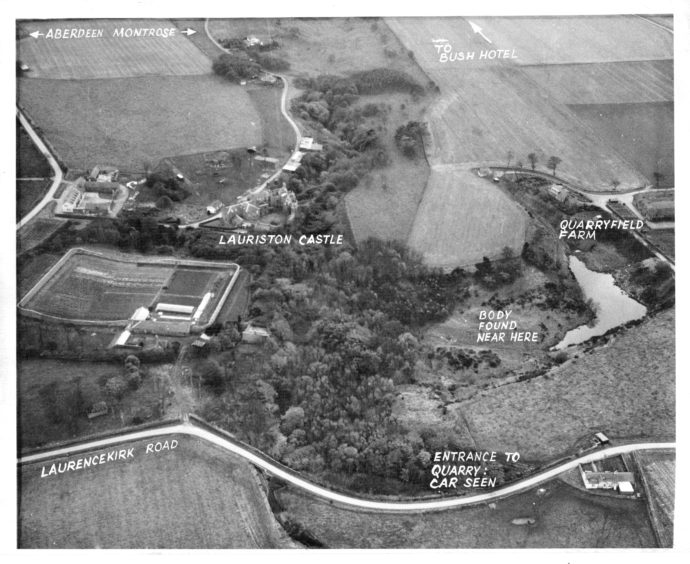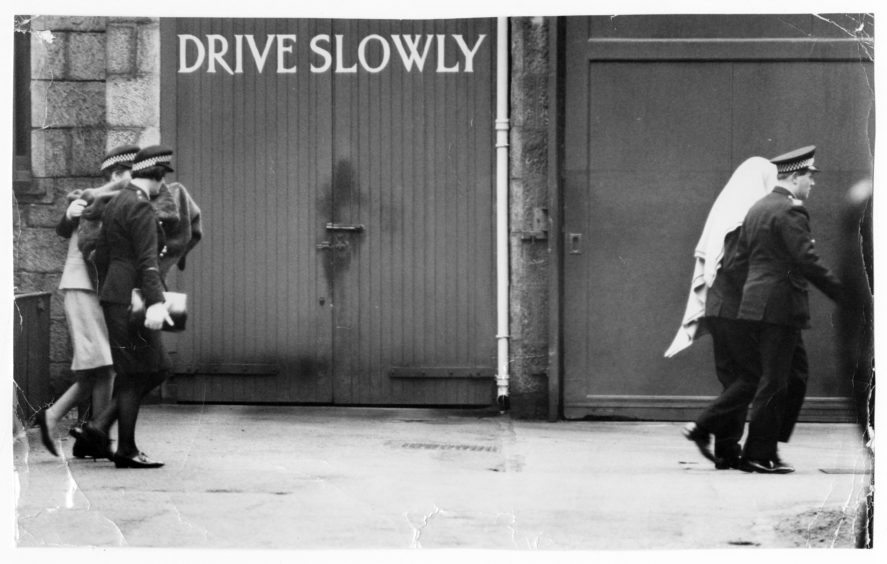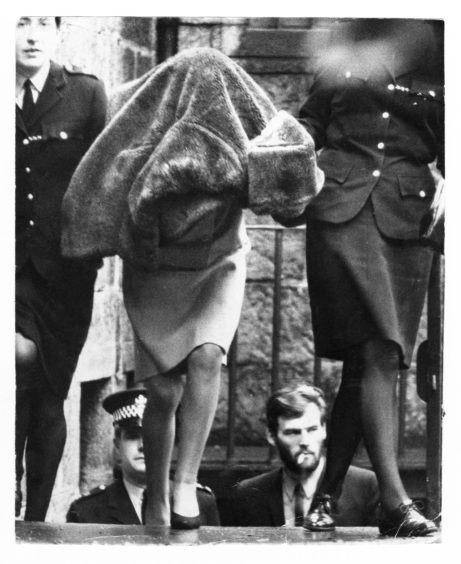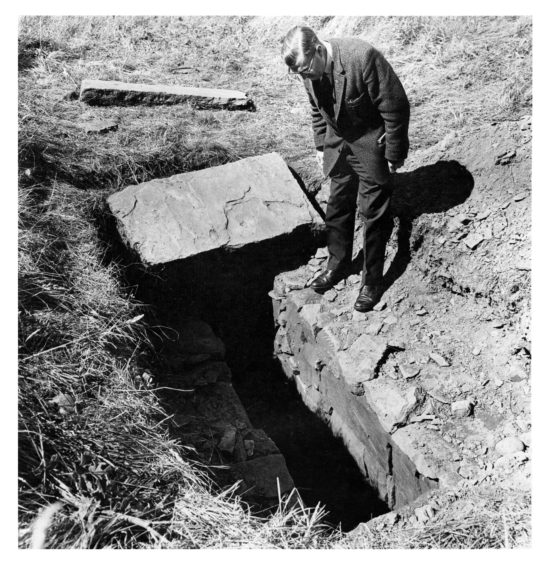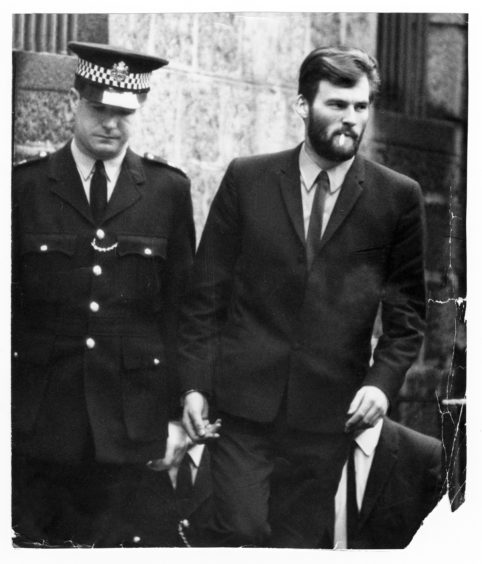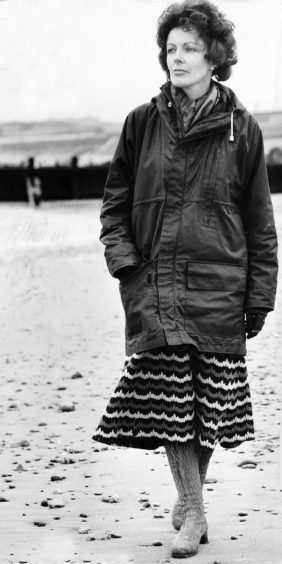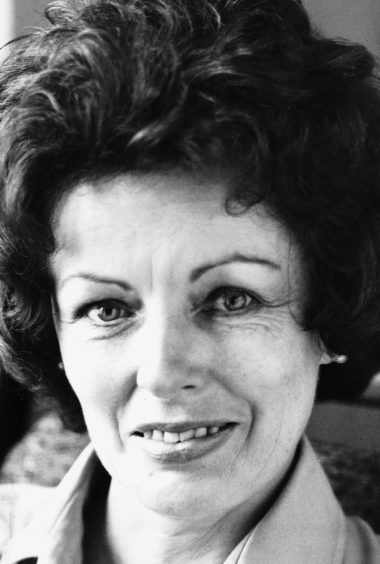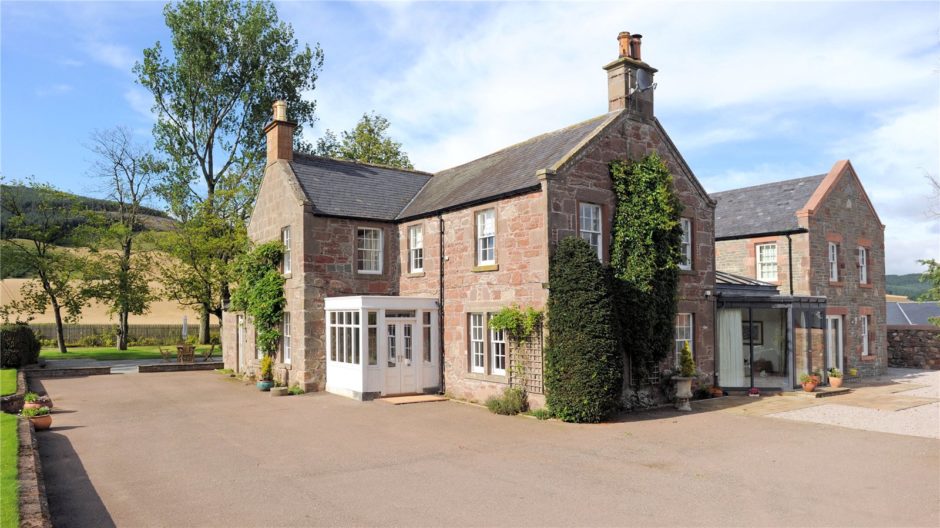It was a sordid tale of sex parties and infidelity at a rural hideaway near Alford nicknamed “Kinky Cottage”, which culminated in the calculated killing of millionaire farmer Max Garvie. His wife, Sheila, spoke out publicly about her role in the murder 40 years ago when she claimed innocence in her book, Marriage to Murder: My Story, published in 1980. Gayle Ritchie takes up the story.
She was a beautiful, blushing, teenage bride, bursting with excitement about her future.
He was a handsome, wealthy farmer – the most eligible bachelor in the Mearns.
When 18-year-old Sheila Watson and Max Garvie, 21, tied the knot in 1955, it seemed a marriage destined to prosper.
They had met at a Young Farmer’s dance and the attraction was mutual.
Sheila, the daughter of a stonemason who worked on the Queen’s Balmoral estate, had worked as an assistant housekeeper at Balmoral, and then as a secretary, but she gave this up to become a devoted housewife.
The young couple moved into Max’s luxury farmhouse of West Cairnbeg at Fordoun near Laurencekirk.
They had two daughters, Wendy and Angela, and a son, Lloyd, in the first few years.
It looked as though they had everything they could ever dream of – plenty of money, healthy children and a happy, loving relationship.
The Garvies were flamboyant and the envy of the folk of the Mearns.
While Max set up a flying club, flew his own private plane and drove fast cars, Sheila often travelled down to London, coming back in the latest fashions – short skirts and skimpy tops which showed off her trim figure and attracted admiring glances from other men.
However, it wasn’t long before the cracks in their relationship began to appear.
Max was becoming bored of his normal life and started looking for something else to satisfy him.
He started drinking heavily and popping pills as if they were sweeties, often while flying his plane in dangerous stunts over the North Sea.
He loved the buzz this gave him, but still, it wasn’t enough.
Free love
It was the 60s and the era of “free love” and swinging parties.
Max developed an obsession with pornography and nudism, had sexual relations with men and women and persuaded Sheila to accompany him on nudist holidays.
The whole family went to a nudist camp in Corsica, when Sheila was pregnant with her third child. She didn’t want to go, but claimed she had to obey her husband.
Max also took up photography and snapped nude photos of Sheila which, to her horror, he showed off to his friends.
His obsession extended to founding his very own nudist colony at a small house he owned near Alford – 25 miles from Aberdeen.
He planted mature trees to keep it private and free from prying eyes.
At first only friends were invited – just a few well-to-do folk having a bit of harmless fun.
The intrusion of a nudist club among the tree and heather-clad hills of Donside didn’t bother the local residents.
One man was quoted in the Evening Express on December 1 1968 as saying: “It would tak mair than that tae fash us. We jist nivir lifted oor heids fae the neeps in the park.”
Another local said: “I did hear that the young lads fae Alford had ta’en up bird watching and there wis a fair trade in binoculars.”
The sex orgies followed soon after – again, just a few close friends in small groups.
Initially, Sheila refused to get involved – the idea repulsed her.
This resulted in arguments between her and Max who hurled abuse at her, calling her a fuddy-duddy, square and old fashioned.
Worn down by his bullying, Sheila stopped resisting and threw herself enthusiastically into the sex games.
The cottage, which was the focus of all these perverse activities, soon became dubbed “Kinky Cottage” by tut-tutting locals.
The bearded barman
When he wasn’t flying, farming or indulging in drug-taking and sex, Max was an office bearer for the SNP.
It was at an SNP meeting that he met Brian Tevendale, a good-looking 22-year-old bearded barman whose family owned the Bush Hotel in St Cyrus.
Tevendale had briefly been in the army but had been dismissed for being absent without leave.
Max had already had a few affairs with young men and while attracted to Tevendale, he had other plans for him.
The men became friends, with Max often inviting Tevendale to go flying and to spend time at the Garvies house.
One night in 1967 when he was staying over, Max shoved Sheila into Tevendale’s room – shivering and naked.
She said she had been told to spend the night there – or else.
Soon, the games took a new turn with Max and Tevendale tossing a coin to see who would sleep with Sheila.
When Max lost he insisted the three go to bed together. Then Max started an affair with Tevendale’s sister, Trudi Birse.
She soon became Max’s favourite mistress, and she later boasted of how they had made love in the cockpit of his two-seater plane.
The wife of a local policeman, Trudi also joined in foursomes with the Garvies and her own brother. Her husband, Alfred Birse, even joined in once as part of a sixsome.
Trudi later confirmed the violence Max would inflict, recalling how she once had to wear a surgical collar because he had beaten her so badly.
Playmates…to lovers
Max soon grew tired of Trudi Birse. He wanted new playmates.
But to his horror, he realised Sheila and Tevendale had fallen for each other and were deeply in love. It didn’t matter that Sheila was 11 years Tevendale’s senior.
Used to getting his own way, he tried to split them up. When Sheila rebelled, he threatened to shoot her “between the eyes”.
When Sheila and Tevendale ran off to Bradford together, he pursued them and brought them home.
It was against this backdrop that a plan to get rid of Max was hatched.
“She said it would be better with Max out the way. I would have done anything she wanted,” Tevendale said later.
Murder
On the morning of May 15 1968, Sheila woke up to find her husband had gone – or so she claimed – and reported him missing to police.
In August, Sheila, then 33, shared some suspicions with her mother, Edith Watson, that Tevendale had killed her husband. Mrs Watson went straight to the cops.
On August 17 1968 – three months after Max had “gone missing”, his putrefied body was found in an underground culvert near the village of St Cyrus. He had a gunshot wound to his neck and a fractured skull.
Immediately, Sheila and Tevendale were charged with Max’s murder.
One of Tevendale’s friends, 20-year-old Alan Peters, was also charged with the murder but was later acquitted.
The trial
The trial made headlines across the country.
Police erected crush barriers to control crowds as the story unfolded over 10 days at the High Court in Aberdeen in November 1968.
As the stories unfolded, Sheila and Tevendale blamed each other.
Sheila claimed she woke in the middle of the night to discover Tevendale and Peters had murdered Max.
Tevendale said the killing was Sheila’s idea and he had gone along with it out of infatuation.
The prosecution claimed Sheila and Tevendale had coldly plotted the murder.
According to the Crown, Sheila persuaded Tevendale to murder Max so they could pursue their relationship.
On the night, Sheila went to bed with Max and had sex with him.
In the early hours she slipped out of bed and let Tevendale and Peters into the house, handing them a .22 rifle belonging to Max.
With Sheila watching from the bedroom doorway, Tevendale smashed Max’s skull with the butt. Then, placing a pillow over his face, he shot him once in the head.
The trio went downstairs, their nerves shattered, and drank a bottle of whisky.
The men wrapped Max’s corpse in a blanket, dumped him in the boot of Peters’ Ford car and took him to his last resting place in the drains of Lauriston Castle.
The court was told that Max had initially encouraged the relationship because Sheila was “frigid” and he believed the affair would make her a better lover.
She was subjected to repeated physical abuse at the hands of her husband.
And it was then, the court was told, that she and Tevendale began plotting Max’s murder.
Gruesome discovery
Tevendale, who had grown up in St Cyrus, knew the area and its nooks and crannies like the back of his hand.
He dumped Max’s body beside an underground channel that runs from Lauriston quarry to the castle, dropped into an inspection hole in the channel and dragged Max’s body in with him.
To get back out, he had to crawl over the body and at one point, brushed cheeks with the murdered man.
Finally, a huge stone slab was pulled over Max’s body.
Verdicts
The public began queuing outside the court at 3am on the day the jury returned their verdicts.
Tevendale was unanimously found guilty of murder. Sheila was found guilty of murder by a majority verdict. They were both jailed for life.
At the end of the trial, Sheila wrote to Tevendale in Perth Prison: “I have decided to have nothing more to do with you ever again.”
The grand, all-consuming romance that had led them to cold murder had died.
An insurance company confirmed Sheila had stood to gain £55,000 on one policy alone as well as other policies, the farm, investments and capital.
The children went to live with their grandmother until her death a year later. Then they were fostered and lived in Lanarkshire.
Under her spell
Both Sheila and Tevendale were released from prison in 1978 but they never made contact.
Years later, Tevendale stated in a newspaper interview that “there was a lot of money to be gained” from Max’s murder and that he was “under Sheila’s spell”.
He said: “Having Max out of the way meant we could get married and I assumed that was her motive.
“Looking back on it now, I’m not so sure. If I could go back and undo it now, I would. But when I did what I did, I was stupid and naive and probably thought I was in love.”
Happily ever after?
Tevendale married and became the landlord of a pub in Scone. He died at his home in the Perthshire town’s Angus Road in 2003 just as he was preparing to leave Scotland for a new life in Gambia.
Sheila ran her aunt’s guest house in Aberdeen and laterally, a seafront B&B in Stonehaven.
In 1979, she wed Rhodesian-born welder David McLellan. The marriage lasted only two years and, shortly after their divorce, she tied the knot with drilling engineer Charles Mitchell, with whom she lived happily until he died in 1992.
Aside from her book, Marriage to Murder, published in 1980, in which she made the case for innocence, she never uttered a word publicly about her role in the killing of her husband.
Sheila, who had developed Alzheimer’s, died of a suspected heart attack in November 2014, aged 80.
Murder mansion
West Cairnbeg, the farmhouse in the Mearns where the Garvies lived and the murder was committed, was put on the market with offers over £749,000 in 2015.
The detached five-bedroom mansion was owned by the couple’s son Lloyd at that point.
He was just four years old when his father was murdered.
